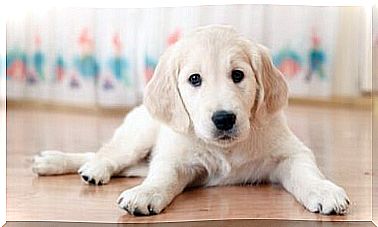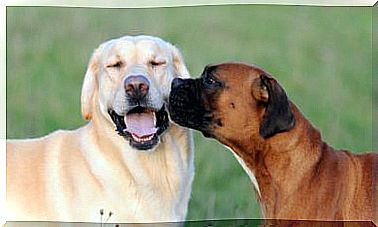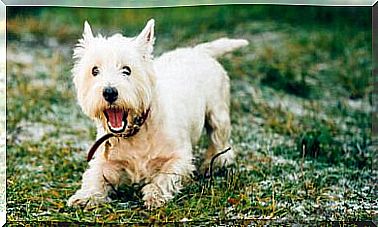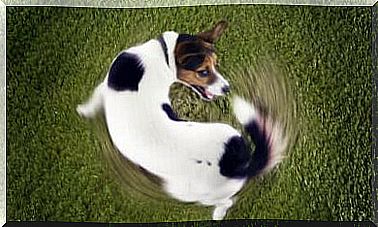The Importance Of Teeth In Dogs

As with humans, teeth in dogs are more than important. Remember that it allows them to eat and even defend themselves. So, in this article, we’re going to tell you how to take care of your pet’s teeth. This way, you will avoid typical illnesses or inconveniences.
Main dental problems in dogs
When food remains in the mouth , bacteria do not take long to cause complications that are worth highlighting. Periodontics is an inflammation of the gums caused by the accumulation of bacterial plaque. This is a disease in the gum tissue that can cause further damage if it infiltrates the groove that forms between the tooth.
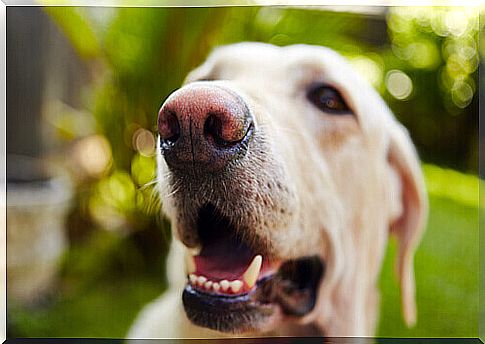
If, when brushing the dog’s teeth, bleeding, swelling, redness, or a stench is observed, he may be suffering from a dental disease. The best way to prevent this problem in dogs is to eliminate the plaque that forms on the tooth by brushing it three times a week. This way you will make sure your pet does not suffer from gingivitis. This disease can even cause the secretion of pus into the cavities of the mandibular bone, where the teeth become lodged, if the infection destroys the connective tissue that reaches the bone.
When your pet loses teeth or bone parts, it is because he suffers from periodontics. The repercussions on the animal’s health in this situation are serious. This disease can even cause a loss of desire to eat, make it impossible for him to grind food well or smell when he takes a toy or object to his mouth.
Dog teeth: what they are for
In most cases, puppies have healthier teeth. But over the years, teeth deteriorate. If we add to that the lack of care, hygiene and prevention, the consequences could be disastrous.
The first teeth begin to appear between 4 and 8 weeks after birth. The following appear between 4 and 7 months of age. Soon, the exchange for permanent teeth happens: 42 teeth that will accompany him for the rest of his life.
The teeth in dogs have more functions than we think. On the one hand, it allows them to cut, tear and grind food (depending on the food, they use incisor teeth, premolars or molars). On the other hand, it helps them to defend themselves if necessary, including defending you from external dangers.
But that’s not all, because teething plays a recreational role (for example, picking up a record thrown in the air when they’re in the park or throwing a ball with all their strength), and they even have a vocal function. You’ll find he’s missing some teeth when he starts barking or vocalizing in a different way.
How to take care of teeth in dogs
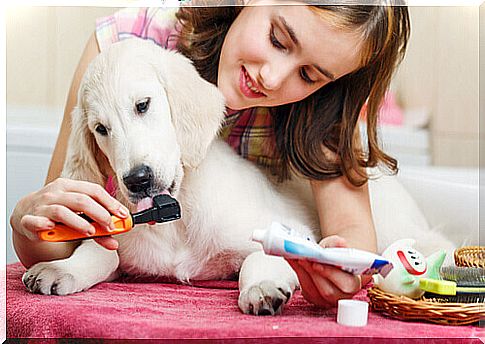
Cleaning is essential for your pet’s teeth to be in perfect condition. Although they don’t suffer as much cavities as people, and it is generally believed that the canine mouth is more hygienic than the human one, it is very important to help them so that they do not suffer from bad breath, plaque, tartar or teeth build-up. yellowish incisors.
Brushing is essential, although many owners flee from this habit for fear of being bitten. It’s true that, at first, your pet will not like it, but if you get used to it from a young age, brushing can become a pleasant experience for him and for you.
Choose a special toothpaste for dogs (available at veterinary clinics) and a time when the pet is tired, such as when he returns from a walk in the park or when playing and exercising. That way it will be quieter and you can finish quickly. Remember that cleaning should be quick and it’s okay to suspend it if you notice the dog starting to feel irritable.
Speak to him in a calm tone of voice and don’t punish him or fight with him, as he will relate this activity to something bad or traumatic. When you finish, reward it with a treat (which will also complement the cleaning, especially in areas that are hard to reach with a toothbrush), a bone or a chew toy.
